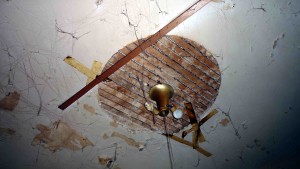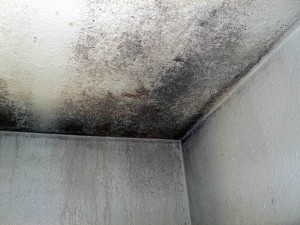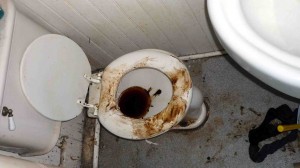
Every Tenant Has One–An Implied Warranty of Habitability
Every Tenant Has One–An Implied Warranty of Habitability
No, not a rat or a rat-like landlord (although you may have both). Every tenant has an implied warranty of habitability. In last week’s post I listed several conditions in a unit that constitute breaches of the implied warranty of habitability. If you find an electrocuted rat in your kitchen stove, odds are that your landlord has breached the implied warranty of habitability in your lease. What if he won’t fix the problem? What can you do?
Believe or not, one of the most common strategies for tenants is to do nothing. Many tenants are willing to put up with significant breaches of the warranty of habitability like no heat or mice partying in the kitchen all night because the rent is cheap and they don’t want to make waves with the landlord. Besides, the Cheese Ball landlord won’t fix the problem correctly anyway. “Here’s a space heater and some rat traps and some buckets.” Or worse, the landlord’s “contractor” who will tear the place up for weeks on end only to leave a gaping hole in the bathroom. So tenants do nothing or repair some conditions themselves.
I understand the dilemma. As an ex-house painter, handyman, there are many repairs I can make myself. In a former tenancy I did that, until the back stairs separated from the house and raw sewage filled the garage twice in one week. I had to communicate more effectively. That tenants are still afraid of reprisal because they ask a landlord to do his job is a disgusting state of affairs, indicative of a system of law and enforcement hasn’t improved much over a thousand years. If you are a tenant you are still a villain.
Inform the landlord in writing.
If you are starting to feel raw at the backside from taking it from the landlord, start by complaining to the landlord in a letter. No phone calls. If you ever have to enforce your rights, the landlord will lie and say he was never informed. You can’t prove that you informed him with a phone call. Include photos of the offense if you can. You’re being helpful by including photos and you’re also implying that you are documenting the offenses and that he better get his ass over there pronto. Be polite. Nobody will read a letter that is over a page long so make it short and sweet. Remember to ask the landlord for a reduction in your rent for the time you had to put up the sewage, rats, leaks, mold, etc. Also ask for the value of any personal property that was damaged by the sewage, rats, leaks, mold, etc.
Don’t make any threats in the first letter unless you have been calling the landlord about the same problem. If you have already informed the landlord or if you are writing your second letter, tell the landlord that you will be calling the appropriate authorities if he doesn’t fix the problem immediately.
Call a housing inspector.
In San Francisco you can call a housing inspector from the Department of Building Inspection (DBI) or the Department of Public Health to report substandard conditions in your unit. You can arrange for a housing inspector to visit your unit. If they find violations of the housing or building codes they will issue a Notice of Violation (NOV). Usually the landlord will have 30 days to correct the defective conditions. NOVs are public records and copies are available at the DBI. You can also view complaint and permit details online.
In other counties, code enforcement is usually the purview of city government. You can find out how to request an inspection by checking your city’s website and searching for “code enforcement.” I have provided a list of links for selected cities on this site. NOVs make great evidence if you need to file a Rent Board petition or sue later.
Childhood Lead Poisoning Prevention Programs
If you have a small child and you have peeling paint and paint chips call your local Childhood Lead Poisoning Prevention Program overseen by the California Department of Public Health. Don’t wait for the landlord to perform shoddy and unsafe repairs.
 File a petition at the Rent Board.
File a petition at the Rent Board.
If the landlord will not decrease your rent or replace your damaged belongings, gather your letters, photos and NOVs and, if you have one, file a petition at the Rent Board for decreases in services. You should check with your local Rent Board to find out what you need to do to file a petition. I will also be writing about that in a future post.
Repair and deduct from rent?
If the landlord refuses to correct the problem after receiving an NOV (believe me, many of them refuse despite the threat of fines) should you repair the problem yourself and deduct the cost from the rent? In fact Civil Code §1942 only requires that you notice the landlord of the substandard conditions and that you are presumed to have given the landlord sufficient notice after 30 days. However, you can only deduct an amount up to the value of one month’s rent. I rarely recommend this course of action because you could find yourself in an eviction action for nonpayment of rent which could be very expensive to defend. Never, ever just stop paying rent without consulting an attorney or discussing it with your local tenants union.
Move out?
If you or your loved ones are truly endangered by conditions in your unit, and you can prove it, sometimes the only alternative is to get out. This is called constructive eviction—even though the landlord hasn’t given you a notice to quit (move out) his negligence has forced you to move. The obvious example of constructive eviction is when the roof caves in after you warned the landlord about the leaks. You have no choice but to move. It is likely you will have to sue the landlord for your damages, so you must be certain that the landlord’s failure to repair caused the unsafe conditions that forced you to move. Consult an attorney about this, if it’s not obvious to you and everybody else that you simply must move.
Sue the landlord for breach of the implied warranty of habitability.
If your damages are $7,500 or less (California) you can try to sue in small claims court. Marshall all of your evidence, then before you file check out Everybody’s Guide to Small Claims Court in California, by Ralph Warner for Nolo Press.
If you feel your case is worth more than $7,500 and that it will be worth the time and effort to sue the landlord in superior court, consult a lawyer. Sometimes it’s a good idea to join with other tenants in the building to make the case attractive to an attorney who will consider representing you all on a contingency basis. If you live in San Francisco join the San Francisco Tenants Union and get a copy of their list of lawyers who only represent tenants.
Call the district attorney?
Only if the conditions in your unit are bad, I mean criminally bad—violations up the wazoo with serious, life threatening injuries and rats the size of cows. Usually you have to be dead to warrant any attention from district attorneys because they have real criminals to catch, you know, like pot smokers.







